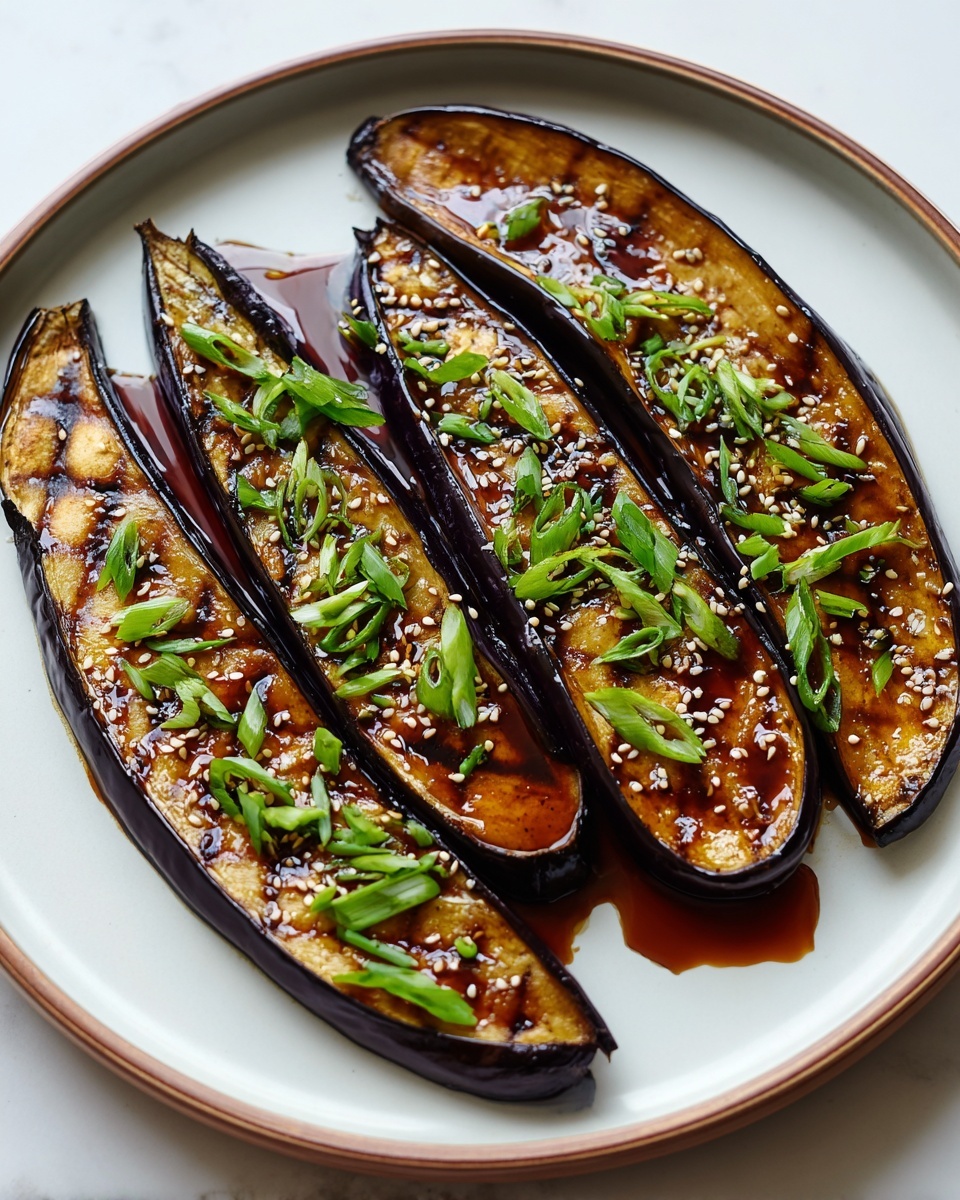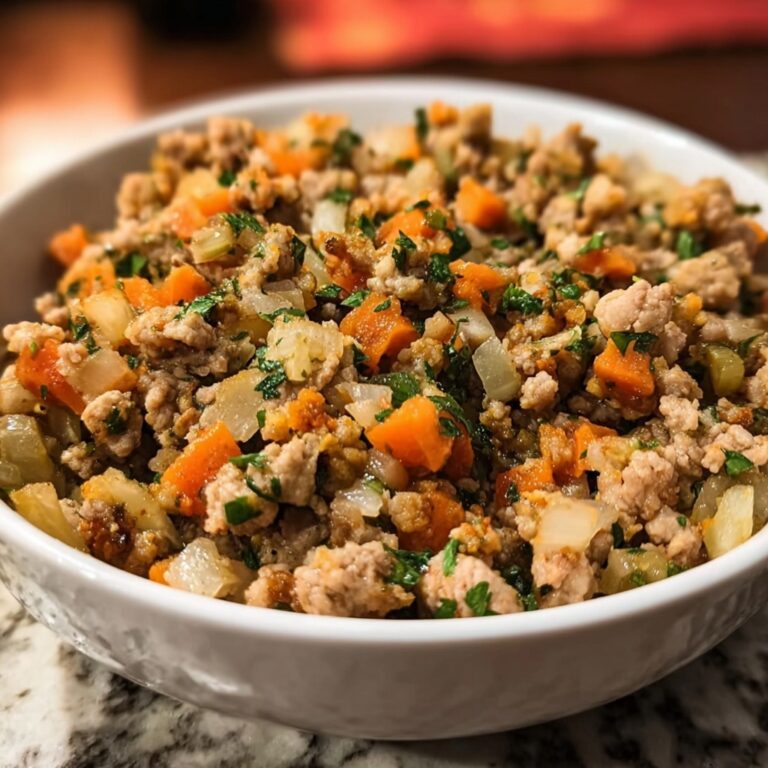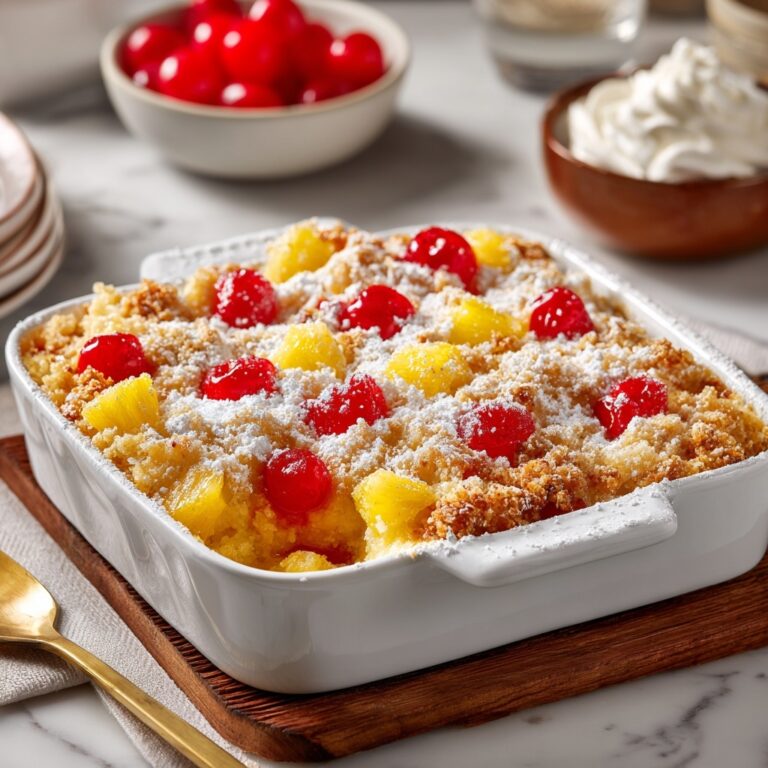If you have ever wished for a dish that so beautifully balances deep umami flavors with a tender, melt-in-your-mouth texture, then the Miso-Glazed Eggplant (Nasu Dengaku) Recipe is about to become your new favorite. This Japanese classic features perfectly roasted eggplants crowned with a luxuriously savory miso glaze that caramelizes just right under the broiler, creating a dish that’s both simple to prepare and absolutely unforgettable. The harmony of sweet, salty, and nutty notes makes it a perfect comfort food that also shines on any dinner table, whether you’re cooking for yourself or impressing friends.
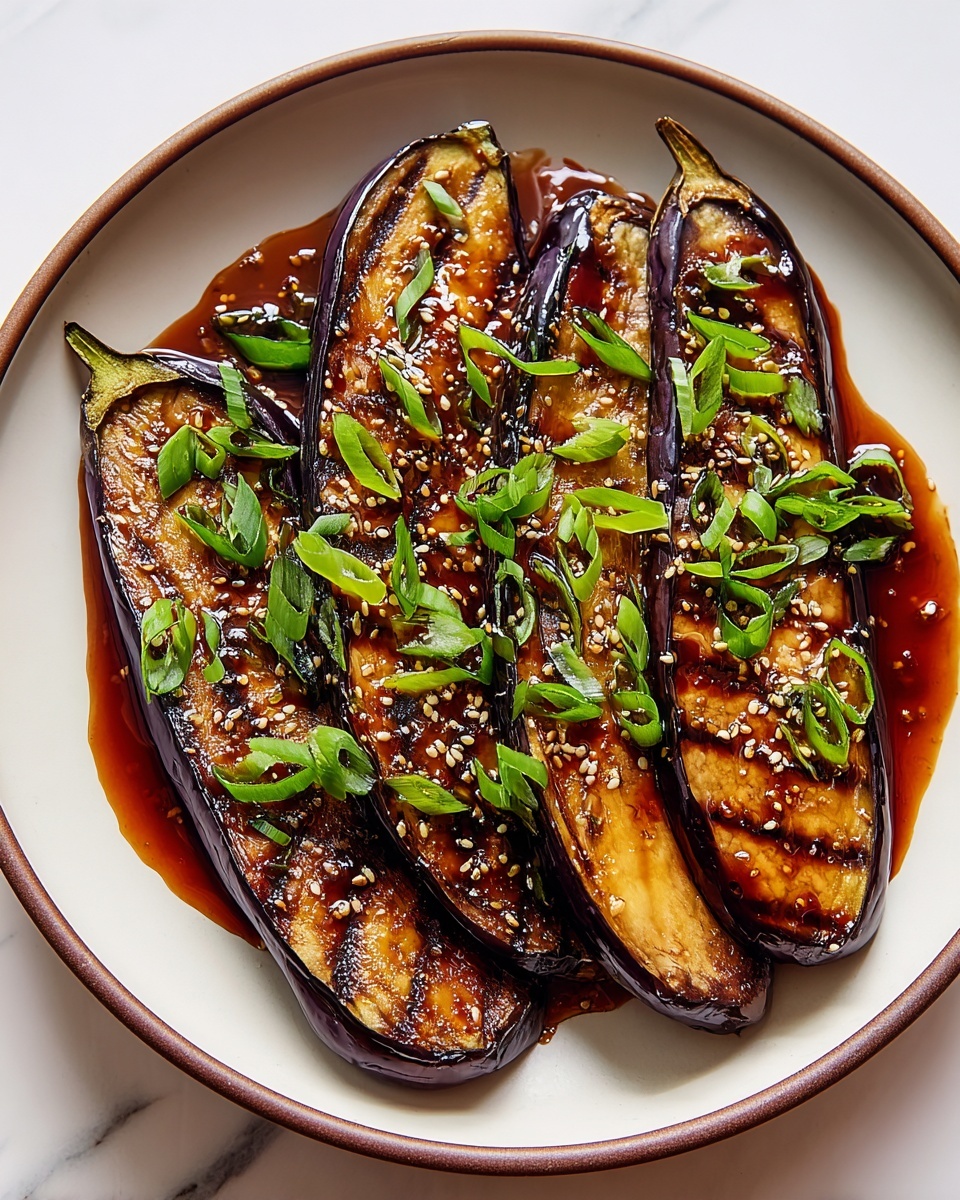
Ingredients You’ll Need
This recipe is all about straightforward, essential ingredients that each add their own magic touch—from the silky softness of the eggplants to the complex, tangy-sweet miso glaze. Every component works together to create that signature flavor and texture you’ll find irresistible.
- 2 medium Japanese eggplants, halved lengthwise: Choose tender, slender eggplants for the best texture and mild sweetness.
- 2 tablespoons white miso paste: The heart of the glaze, offering rich umami and a hint of sweetness.
- 1 tablespoon mirin: Adds a gentle sweetness and depth typical of Japanese cuisine.
- 1 tablespoon sake: Brings a subtle complexity and helps tenderize the eggplant.
- 1 teaspoon sugar: Balances the saltiness with a soft caramel note in the glaze.
- 1 tablespoon sesame oil: Provides a nutty aroma and helps achieve that golden sear on the eggplants.
- 1 teaspoon soy sauce: Enhances savoriness, be sure to use gluten-free soy sauce if needed.
- 1 tablespoon water (as needed for thinning glaze): Adjusts glaze consistency to perfect spreadability.
- 1 tablespoon toasted sesame seeds: Adds crunch and an eye-catching finish.
- 1 green onion, thinly sliced: Fresh garnish for a pop of color and sharp brightness.
How to Make Miso-Glazed Eggplant (Nasu Dengaku) Recipe
Step 1: Prepare and Score the Eggplants
Start by halving the Japanese eggplants lengthwise, then score the flesh in a neat crosshatch pattern. This technique is essential because it helps the eggplant cook evenly, absorb the flavors of the glaze better, and looks beautiful once finished—all without cutting through the skin.
Step 2: Sear the Eggplants
Heat the sesame oil in a large oven-safe skillet over medium heat. Place the eggplant halves cut-side down to develop a golden-brown sear. This step builds a deeper flavor foundation and adds a slight nuttiness thanks to the toasted oil. Cook for around 4 to 5 minutes until the surface turns nicely caramelized.
Step 3: Roast Until Tender
Flip the eggplants over and transfer the skillet to a preheated 400°F (200°C) oven. Roast the eggplants for 15 to 20 minutes, allowing the flesh to become beautifully soft and luscious, perfect for soaking up that irresistible miso glaze.
Step 4: Whisk Together the Miso Glaze
While the eggplants roast, combine the white miso paste, mirin, sake, sugar, soy sauce, and a tablespoon of water in a small bowl. Whisk thoroughly until the mixture is smooth and has the right pourable consistency. This miso glaze is the soul of the dish; balancing its taste perfectly makes all the difference.
Step 5: Apply the Glaze and Broil
Once the eggplants are tender, remove the skillet from the oven and flip the eggplants cut-side up. Brush them generously with the miso glaze, making sure to fill in those pretty scored grooves. Broil on high for 2 to 3 minutes until the glaze bubbles and develops a slight caramelized crust. Keep a close eye on it to avoid burning!
Step 6: Garnish and Serve
To finish, sprinkle toasted sesame seeds and thinly sliced green onions over the top. This not only adds texture but also gives the dish a vibrant burst of fresh flavor and an attractive presentation.
How to Serve Miso-Glazed Eggplant (Nasu Dengaku) Recipe
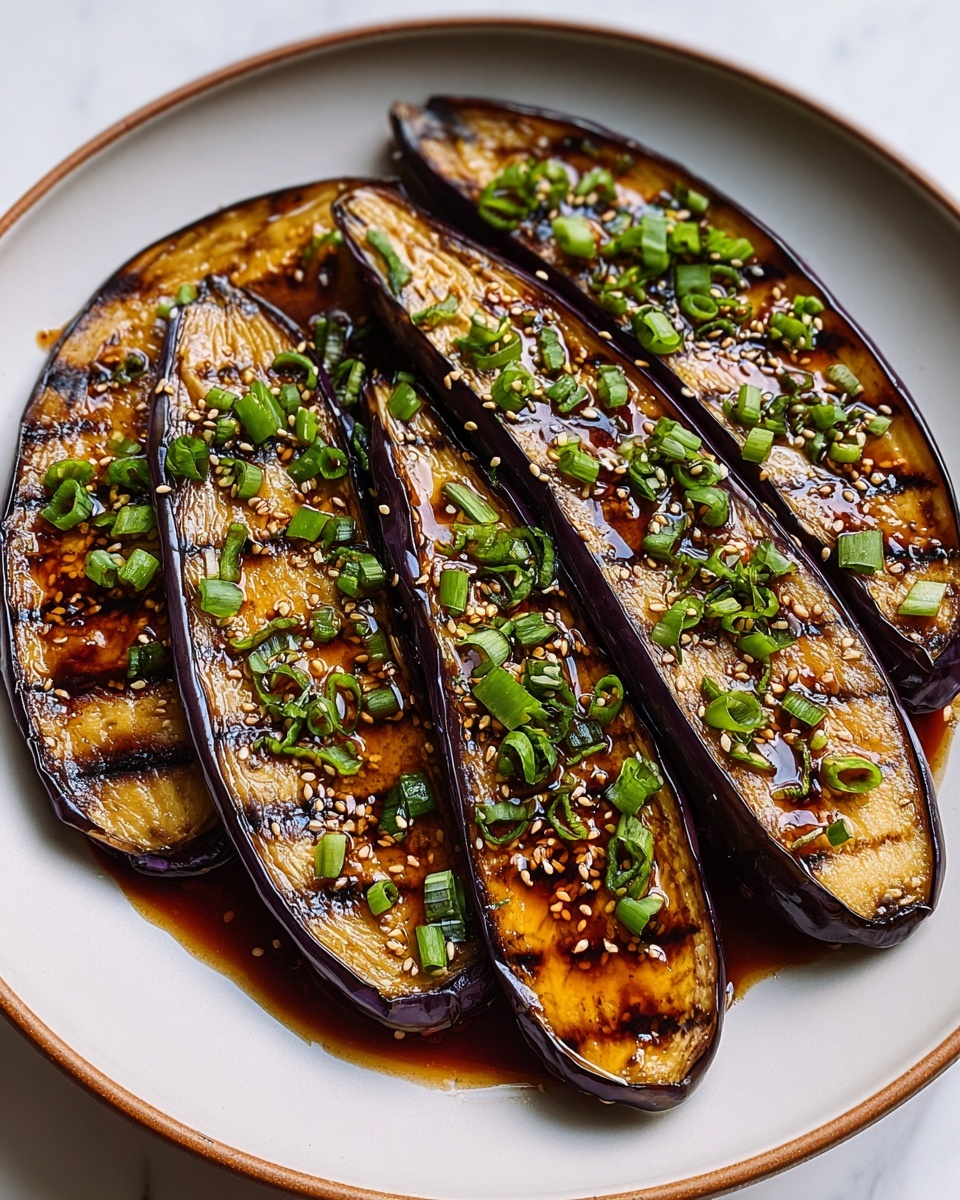
Garnishes
Besides the classic sesame seeds and green onions, feel free to add a sprinkle of shichimi togarashi (Japanese seven-spice powder) for a gentle kick of heat or a few fresh shiso leaves for a refreshing herbal note. These garnishes amp up the dish’s visual appeal and complement the rich glaze.
Side Dishes
This dish pairs especially well with steamed white rice to mop up the luscious sauce or alongside a simple cucumber salad tossed with rice vinegar for a refreshing contrast. You can also enjoy it as part of a larger Japanese-inspired meal featuring miso soup and pickled vegetables.
Creative Ways to Present
For a modern twist, try slicing the roasted, glazed eggplant into bite-sized cubes and serving on skewers as an appetizer. Alternatively, top a bed of soba noodles with these glazed eggplants for a comforting meal that balances cozy textures with bright, savory flavors.
Make Ahead and Storage
Storing Leftovers
Leftover miso-glazed eggplant keeps beautifully in an airtight container in the refrigerator for up to 2 days. The flavors deepen as it sits, making it just as delightful the next day, especially when gently reheated.
Freezing
This dish is best enjoyed fresh, but if you need to freeze it, place cooled eggplants with glaze into a freezer-safe container and freeze for up to one month. Keep in mind freezing might slightly change the texture of the eggplant.
Reheating
To reheat, warm the eggplants gently in a toaster oven or regular oven at low heat until heated through. Avoid microwaving if possible, to help maintain texture and prevent the glaze from becoming soggy or overly thick.
FAQs
Can I use other types of eggplant for this recipe?
While Japanese eggplants are ideal for their tender texture and sweetness, you can substitute small globe eggplants if necessary. Just expect a slightly firmer texture and adjust cooking times accordingly.
Is this recipe vegan and gluten-free?
Yes! The Miso-Glazed Eggplant (Nasu Dengaku) Recipe is naturally vegan, and by using gluten-free soy sauce, it can also be made gluten-free, making it accessible for a variety of diets.
How spicy is this dish?
This recipe is not spicy by itself but balances sweet, salty, and umami flavors. You can add spice easily by incorporating chili flakes into the glaze or garnishing with Japanese seven-spice for a gentle heat.
Can I make the miso glaze ahead of time?
Absolutely! The miso glaze can be mixed up to a day in advance and stored in the refrigerator. Just give it a quick whisk before glazing the eggplants to reincorporate any separated ingredients.
What if I don’t have an oven-safe skillet?
If you don’t have an oven-safe skillet, simply sear the eggplants in a regular pan and transfer them to a baking dish for the oven roasting step. Just make sure it’s suitable for 400°F temperature.
Final Thoughts
Making the Miso-Glazed Eggplant (Nasu Dengaku) Recipe is like inviting a bit of Japan’s culinary heart into your kitchen. It’s straightforward but impressive, comforting yet exciting. Whether it becomes a regular on your dinner table or a special treat, you’ll find that every bite is a delightful celebration of umami. I can’t wait for you to try it and savor the magic yourself!
Print
Miso-Glazed Eggplant (Nasu Dengaku) Recipe
- Prep Time: 10 minutes
- Cook Time: 25 minutes
- Total Time: 35 minutes
- Yield: 2 servings
- Category: Side Dish
- Method: Roasting
- Cuisine: Japanese
- Diet: Vegan
Description
This Miso-Glazed Eggplant (Nasu Dengaku) is a classic Japanese side dish featuring tender roasted eggplants coated with a luscious, savory-sweet miso glaze. The eggplants are first pan-seared to develop a golden crust, then roasted until soft, and finally broiled with a flavorful miso mixture until caramelized and bubbling. Garnished with toasted sesame seeds and sliced green onions, this vegan and gluten-free recipe is a delicious way to enjoy traditional Japanese flavors at home.
Ingredients
Vegetables
- 2 medium Japanese eggplants, halved lengthwise
Glaze
- 2 tablespoons white miso paste
- 1 tablespoon mirin
- 1 tablespoon sake
- 1 teaspoon sugar
- 1 teaspoon soy sauce
- 1 tablespoon water (as needed for thinning glaze)
Other
- 1 tablespoon sesame oil
- 1 tablespoon toasted sesame seeds
- 1 green onion, thinly sliced
Instructions
- Preheat and Prepare Eggplants: Preheat your oven to 400°F (200°C). Score the flesh of the halved eggplants in a crosshatch pattern, being careful not to cut through the skin. This helps the eggplants absorb the glaze and cook evenly.
- Sear Eggplants: Heat sesame oil in a large oven-safe skillet over medium heat. Place the eggplant halves cut-side down and cook for 4 to 5 minutes until they develop a golden-brown crust.
- Roast Eggplants: Flip the eggplants so the skin side is down and transfer the skillet to the preheated oven. Roast for about 15 to 20 minutes, or until the eggplants are tender when pierced with a fork.
- Prepare Miso Glaze: While the eggplants are roasting, whisk together the white miso paste, mirin, sake, sugar, soy sauce, and a splash of water in a small bowl. Adjust the water quantity to make a smooth, pourable glaze.
- Glaze and Broil: Remove the skillet from the oven and flip the eggplants cut-side up. Generously brush the miso glaze over the scored flesh surface. Place the skillet under the broiler on high for 2 to 3 minutes until the glaze bubbles and caramelizes slightly. Watch carefully to avoid burning.
- Garnish and Serve: Remove the eggplants from the oven and sprinkle with toasted sesame seeds and thinly sliced green onion for an aromatic, flavorful finish. Serve warm as a side dish.
Notes
- Japanese eggplants are preferred for their tender texture and mild flavor, but small globe eggplants can be used as a substitute.
- If the miso glaze is too thick, add a small amount of water to reach a smooth, easily spreadable consistency.
- For a gluten-free version, be sure to use gluten-free soy sauce.
- Keep a close eye when broiling as the sugar in the glaze can burn quickly.

